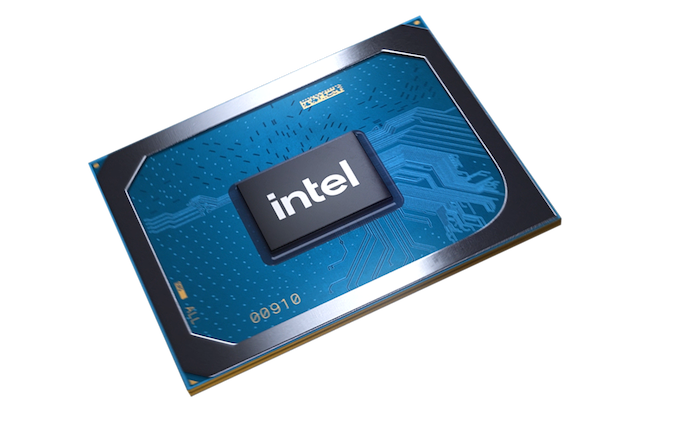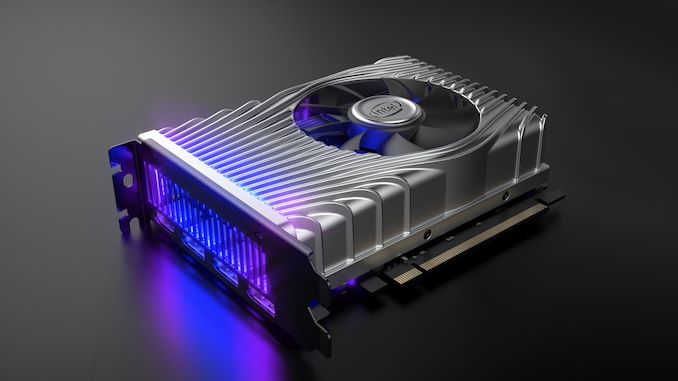Intel’s DG1 GPU Coming to Discrete Desktop Cards Next Year; OEM-Only
by Ryan Smith on October 31, 2020 12:01 PM EST
Alongside today’s launch of Intel’s DG1-based Iris Xe MAX graphics for laptops, the company is also quietly confirming that DG1 will be coming to desktop video cards as well, albeit in a roundabout way.
Though still in the early stages, a hereto unnamed third party has reached an agreement with Intel to produce DG1-based desktop cards. These cards, in turn, will be going into OEM desktop systems, and they are expected to appear early next year.
The very brief statement from Intel doesn’t contain any other details. The company isn’t saying anything about the specifications of the OEM desktop cards (e.g. clockspeeds), nor are they naming the third party that will be making the cards, or any OEMs who might be using the cards. For today at least, this is a simple notification that there will be OEM cards next year.
As for the market for such cards, there are a couple of avenues. OEMs could decide to treat the cards similarly to how Iris Xe MAX is being positioned in laptops, which is to say as a cheap add-in accelerator for certain GPU-powered tasks. Intel has baked a significant amount of video encode performance into the Xe-LP architecture, so the cards could be positioned as video encode accelerators. This would be very similar to Intel’s own plans, as the company will be selling a DG1-based video encode card for servers called the SG1.
Alternatively, the third party may just be looking to sell the DG1 card to OEMs as simple entry-level discrete graphics cards. Based on what we know about Xe MAX for laptops, DG1 is not expected to be significantly more powerful than Tiger Lake integrated graphics. However, as pointed out by our own Dr. Ian Cutress, it should be a good bit better than any comtemporary Atom’s integrated GPU.

Sadly, the OEM card probably won't be as fancy as Intel's DG1 development card










68 Comments
View All Comments
Alexvrb - Monday, November 2, 2020 - link
We're talking about a desktop DG1 graphics card, per the article. The comparison points are only given for perspective. Ryan was trying to compare these cards to top-line 96 EU TGL chips. These desktop GPUs are meant to be paired with chips with lesser/no GPUs. I'm saying that a desktop TGL with 1125G4-like EU config, or any other low-end quad chips will see a massive jump in GPU performance.PeachNCream - Monday, November 2, 2020 - link
I am pretty excited about Intel reentering the dGPU space. We badly need competition in terms of lower TDP and power demand graphics. Very few dGPUs can be fully powered by the PCIe slot which closes a lot of doors in terms of upgrading older computers with modern graphics adapters. That, I feel, generates lots of electronics waste because even a lowly Ivy Bridge i5 has enough CPU to run most modern titles well as long as it has a graphics card with sufficient power. However, many such computers are available from OEMs that have poor or no upgrade options in terms of power supplies necessary to support something other than a GT 1030. Should Intel bring competition in the lower TDP range, that will be helpful for those of us looking for a modest gaming experience using lower end or older systems.Spunjji - Monday, November 2, 2020 - link
Xe Max can't even outperform a GTX 1050, so it's not really bringing anything new to the sector. Performance per watt of Xe appears to be somewhere short of RDNA and Turing.If (big if, admittedly) AMD and Nvidia decide to bring their new architectures back to the low end, it's toast.
lmcd - Monday, November 2, 2020 - link
The last PCIe-powered card Nvidia released had a dated encoder, and neither one will be wasting 8nm or 7nm capacity on this. Imo the best thing Intel could do is swap this to their 14nm backported version for desktop and let it clock up like crazy with the headroom and low leakage they have on their extremely mature process. Perhaps the memory controller isn't backported though.PeachNCream - Monday, November 2, 2020 - link
I would be happy if it outperformed a GT 1030 and was in the same ~30W TDP range. The GTX 1050, if you can get one of the slot-powered versions, still pushes some weaker OEM desktop PSUs a little too hard for comfort. Some OEMs also only rated their PCIe 16x slots for around 37W max power draw so a 1050 is often a bit too much leaving the system owner stuck with a 1030, iGPU, or one of a handful of very inadequate alternatives.lagittaja - Wednesday, November 4, 2020 - link
I'd buy oneJayNor - Thursday, November 5, 2020 - link
Since Intel's Rocket Lake-S and Tiger Lake-H will come with 20 PCIE4 lanes, it would make sense if the DG1 desktop cards are available with 16 lane support.However, there have also been rumors of Xe-HPG/DG2 launching in the same timeframe as Tiger Lake-H (see notebookcheck article on 9/17/2020)